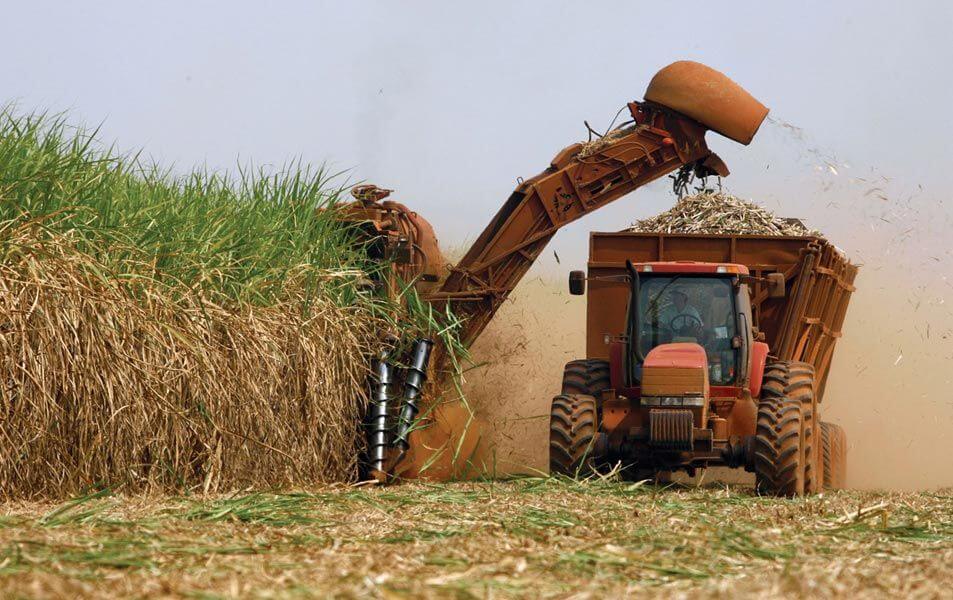Hippo Valley expects 4% rise in yield
SUGAR producer, Hippo Valley Estates aims to harvest 945,471 tons of cane and procure 739,329 tons from private farmers in the 2024/25 period, signalling a four percent growth from the current year.
The company foresees enhanced milling efficiencies owing to improved cane quality and the successful completion of the annual maintenance program, targeting a sugar output of 202,860 tons at a cane-to-sugar ratio of 8.26.
In its financial report for the year ended 31 March 2024, the company expects a four percent rise in yield.
“Company through its strategic focus to improve yields, is looking forward to harvesting 945 471 tons of cane and receive 739 329 tons of cane from private farmers in the 2024/25 season, a four percent increase from the current year.”
“Milling efficiencies are anticipated to recover on the back of improved cane quality and after the satisfactory completion of the requisite annual maintenance program, with a forecast to produce 202 860 tons of sugar at a cane to sugar ratio of 8.26.”
In the period under review, Cane deliveries from the Company’s own plantations (miller-cum-planter) fell 15 percent below the prior year, due to lower cane yields and a reduction in the area harvested arising from a four-week delay to the milling season while cane delivery agreements were being negotiated.
Cane yields dropped to 89.20 tons cane per hectare (tch) (2023: 95.38tch) resulting from reduced volume of higher-yielding “plant cane” harvested in the current year and adverse weather conditions coming from a strong El Nino event occurring between October 2023 and March 2024.
Private farmer cane deliveries contributed 46 percent (2023:42 percent) of the total cane supply, and were one percent below prior year, having experienced a six percent drop in yields after achieving 68.82tch (2023: 73.40tch).
The milling season ended on 21 December 2023 with reduced sugar production by 12 476 tons, a six percent drop from prior year.
The decrease was due to late season start-up, delays in processing harvested cane given the removal of rateable delivery quotas from cane supply agreements, as well as low milling efficiencies owing to the limited availability of critical spares (affected by cashflow constraints on account of the impact of cheap sugar imports).
This resulted in unscheduled mill stoppages and lost time available (a measure of plant reliability) increased to 17.8 percent from 14.6 percent recorded in the prior year.
Overall, 652 hectares of cane was not able to be crushed and was carried over to the following season.
The firm notes that in the period under review, local market purchasing power was depressed, due to among other factors, the cheaper duty-free and non-fortified sugar imports eroded the local market share.
It said following the publication in May 2023 of Statutory Instrument 80, domestic market sales for the sugar industry experienced immense pressure with volumes declining by 54 770 tons (16 percent) to 283 289 tons (2023: 338 059 tons).
Despite the repeal of Statutory Instrument 80 in January 2024, the eight-month period with imported sugar brands had unfair comparative cost advantages over locally-produced sugar as imported sugar was not subjected to Vitamin A fortification as required by law (i.e. SI 120 of 2016]), among other factors.
It said continuous engagements with the relevant authorities during the eight-month period resulted in the re-instatement of import duty on sugar and other basic commodities with recovery only having commenced towards the end of the financial year, owing to high stocks of imported sugar in the country.
To date, the market share of locally produced sugar remains on the recovery path.
“During the period under review, export sales volume for the industry increased by 148 percent to 108 374 tons (2023: 43 761 tons) partly arising from the sales volume redirected to the export market to mitigate against the drop in domestic market revenue and to generate the cash required to sustain business operations.
“Additionally, export sales volume growth was driven by the increased United States Tariff Rated Quota (USTRQ) allocation to 22 420 tons (2023: 17 751 tons) and exports to the United Kingdom of 55 000 tons.
“Sales into regional markets also increased by 4 943 tons with most of this going to the Botswana and East Africa markets.
International sugar markets are however residual markets for excess sugar and accordingly export market prices are typically lower than domestic market prices,” reads part of the report.
On its supply growth initiatives, in partnership with Triangle Limited, it continues to work with Government and various financial institutions to progress the implementation of Project Kilimanjaro, a 4 000 hectare new sugarcane development.
The first 700 hectares, known as the Project Kilimanjaro Empowerment Block and benefitting 41 new farmers has been planted with cane, of which 348 hectares were harvested this season. The Government has already allocated offer letters to 116 new beneficiary farmers for the development to new sugarcane plots on the balance of the 3 300 hectares of Project Kilimanjaro.-chroncile











